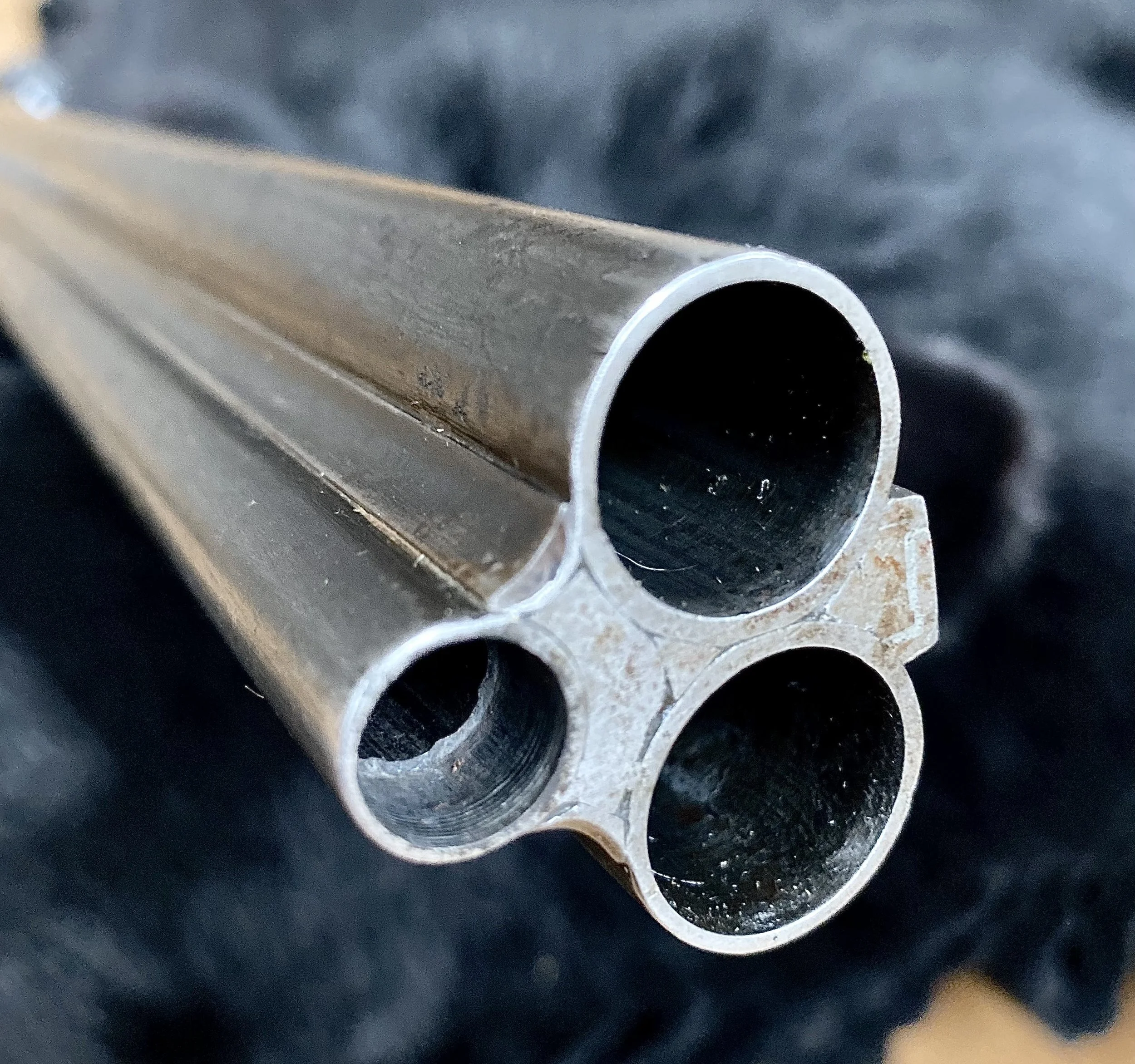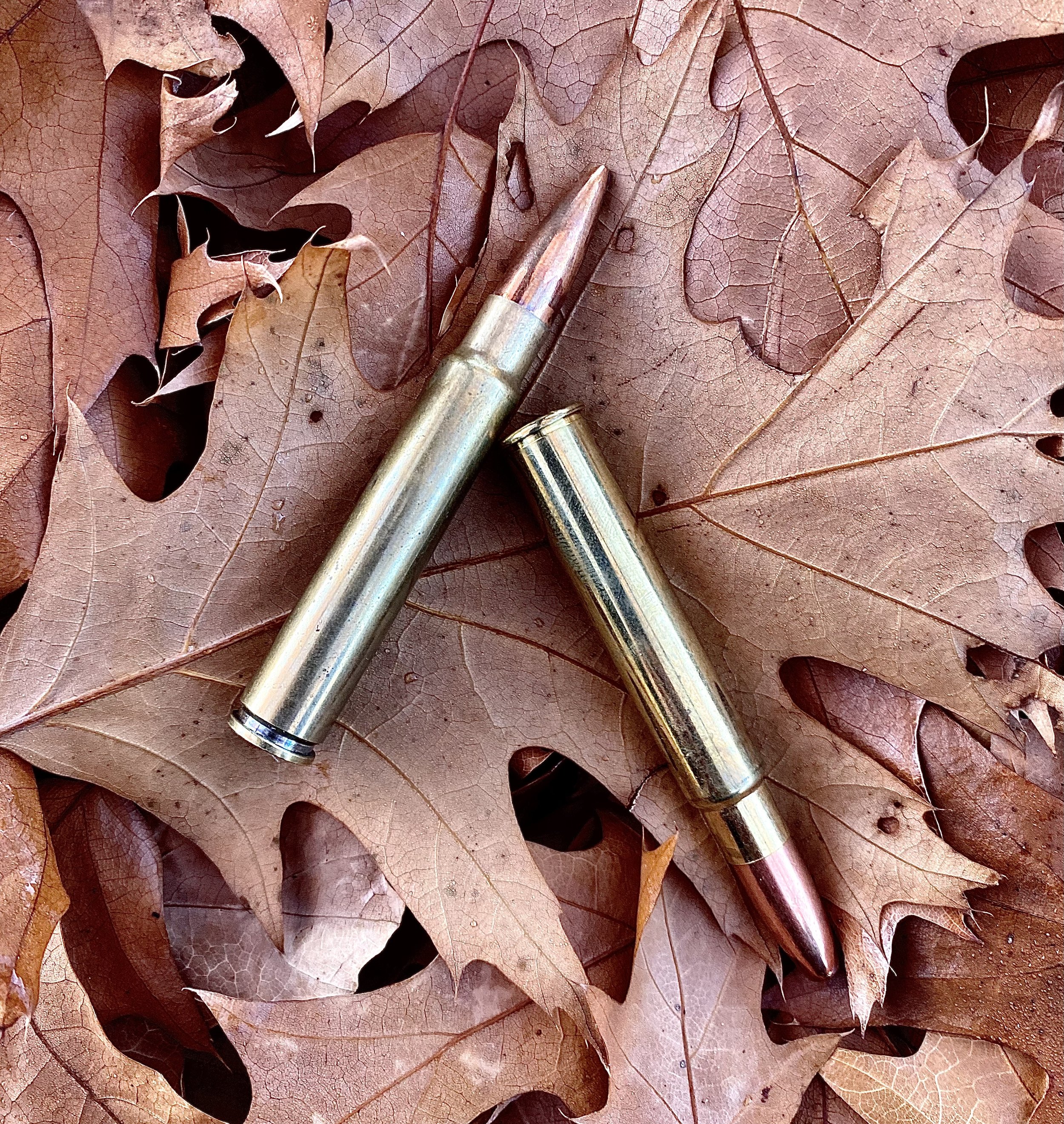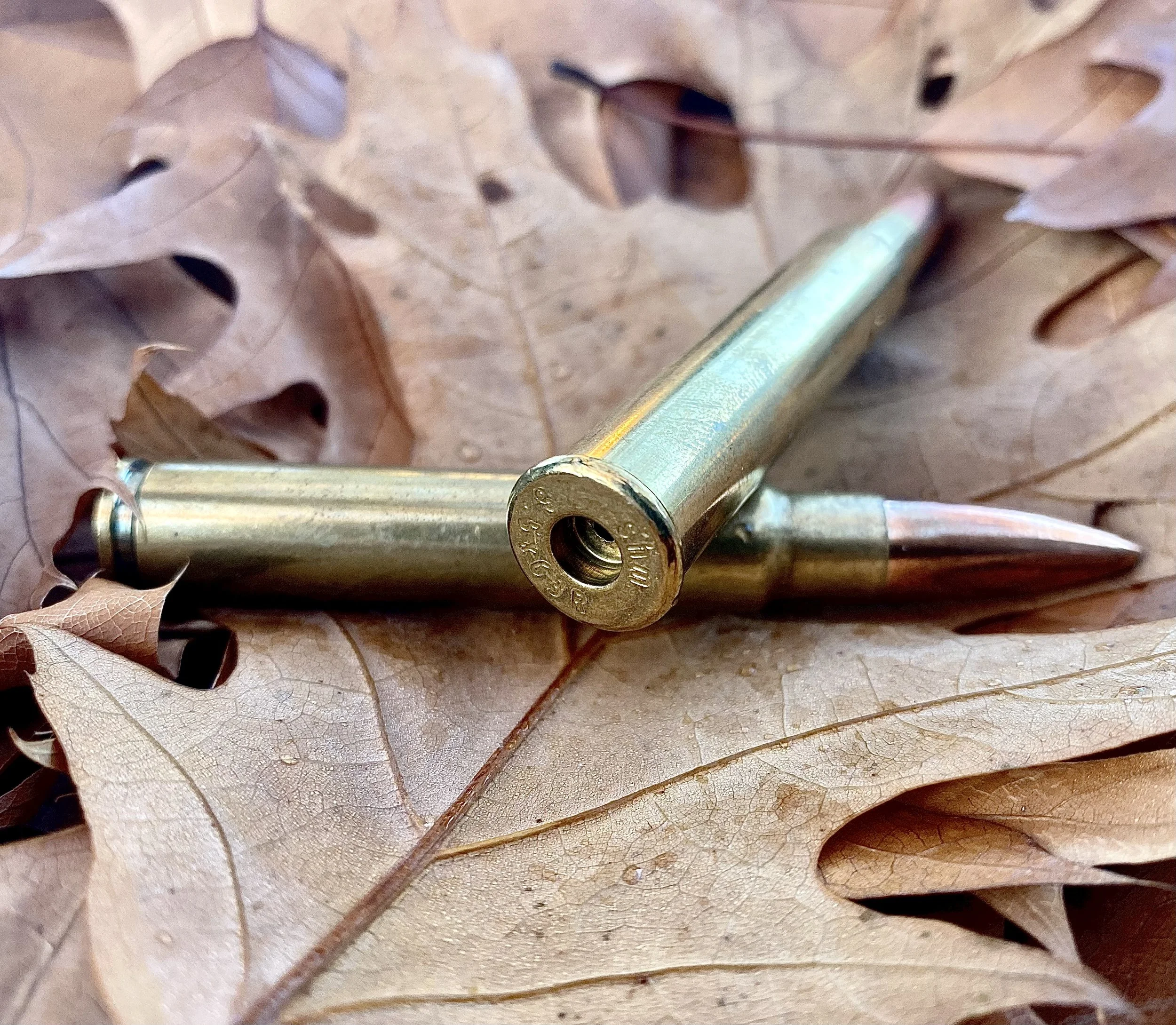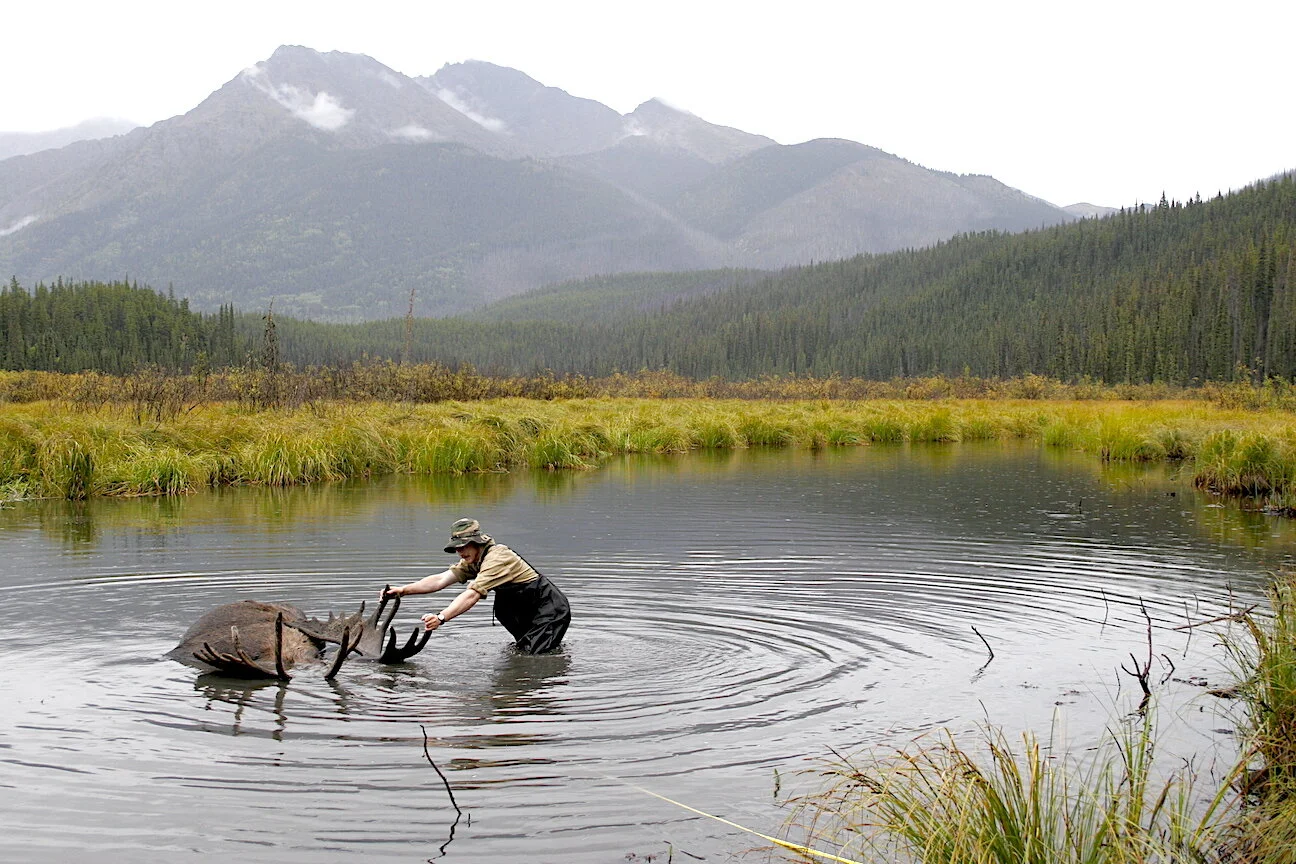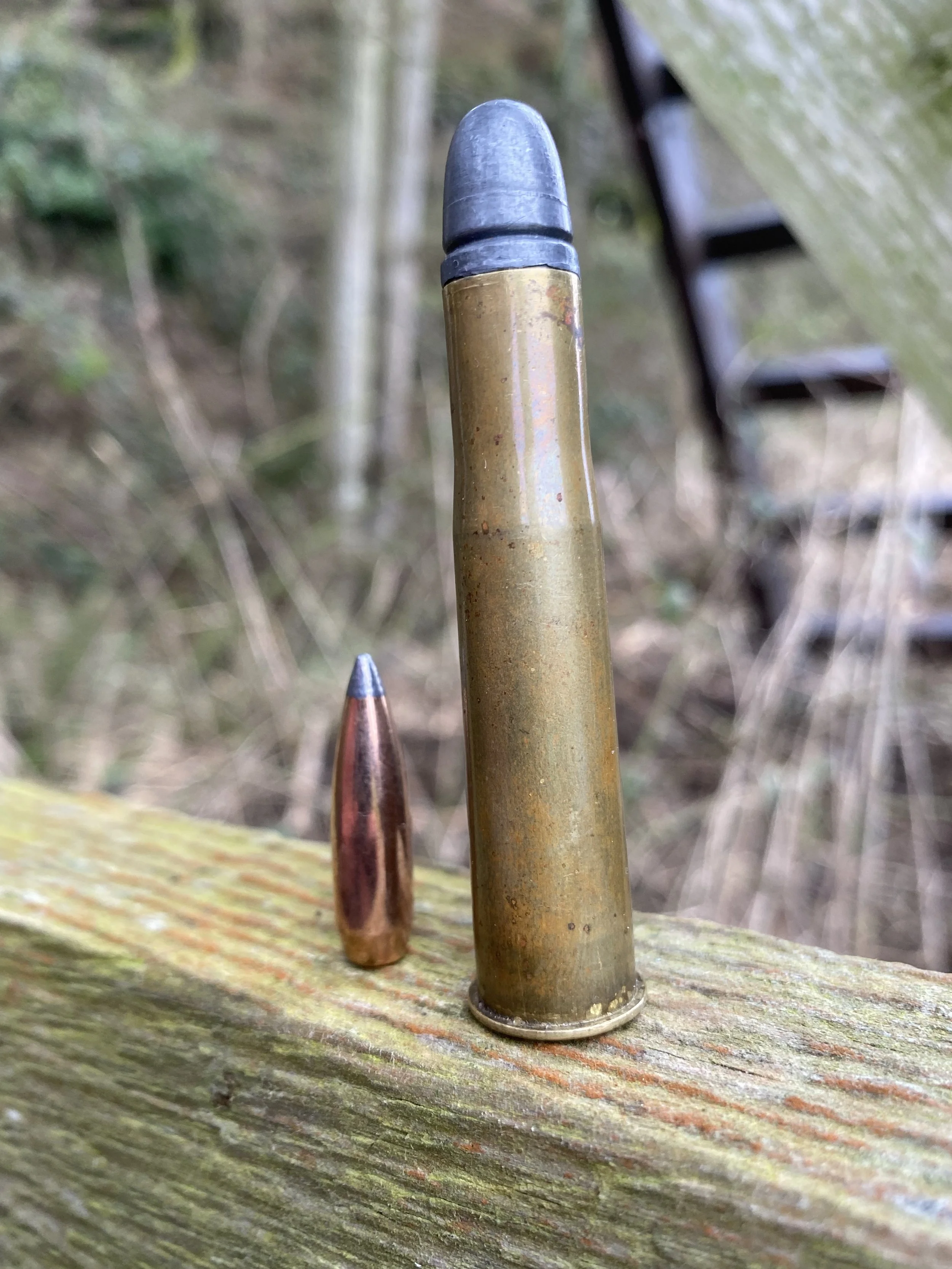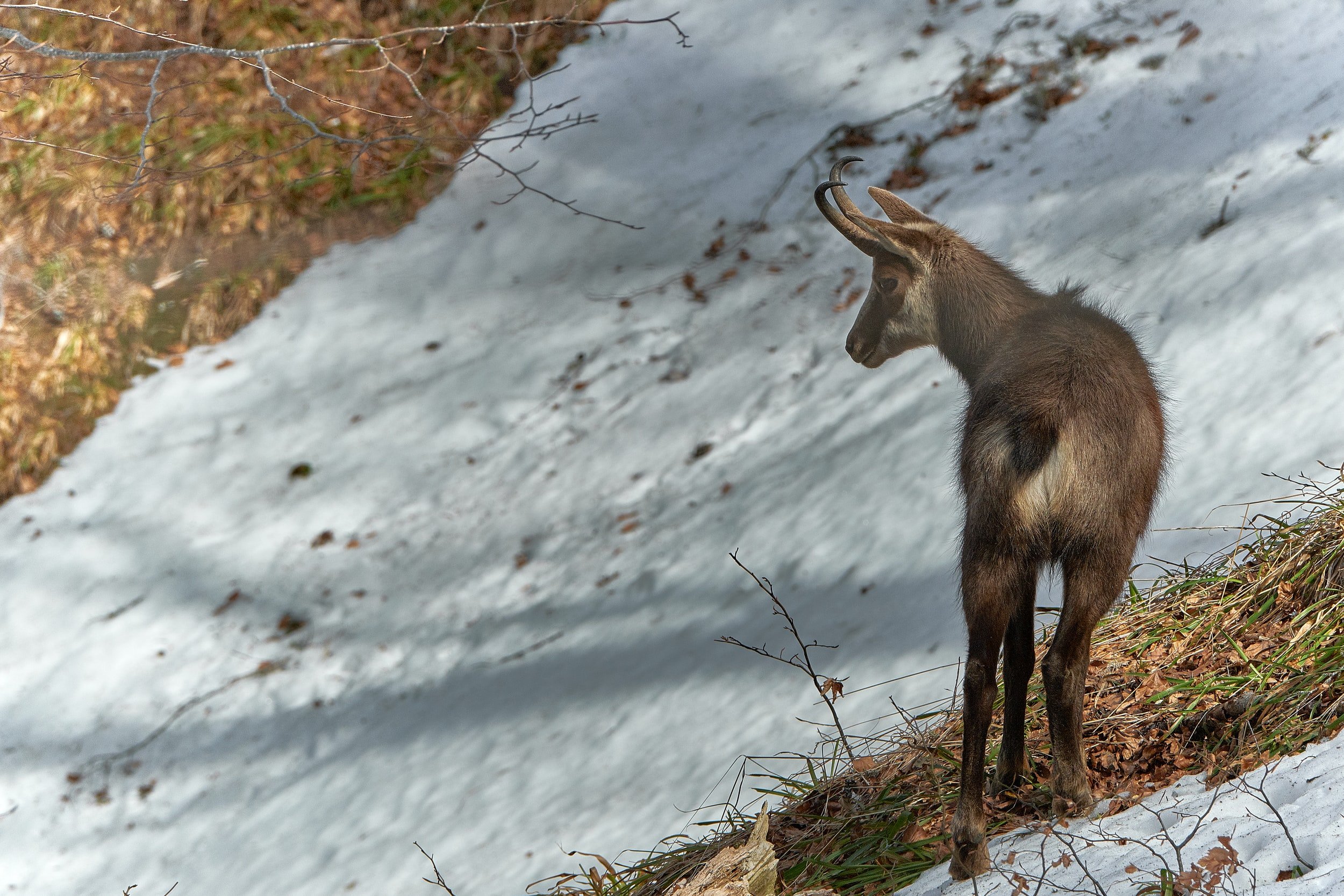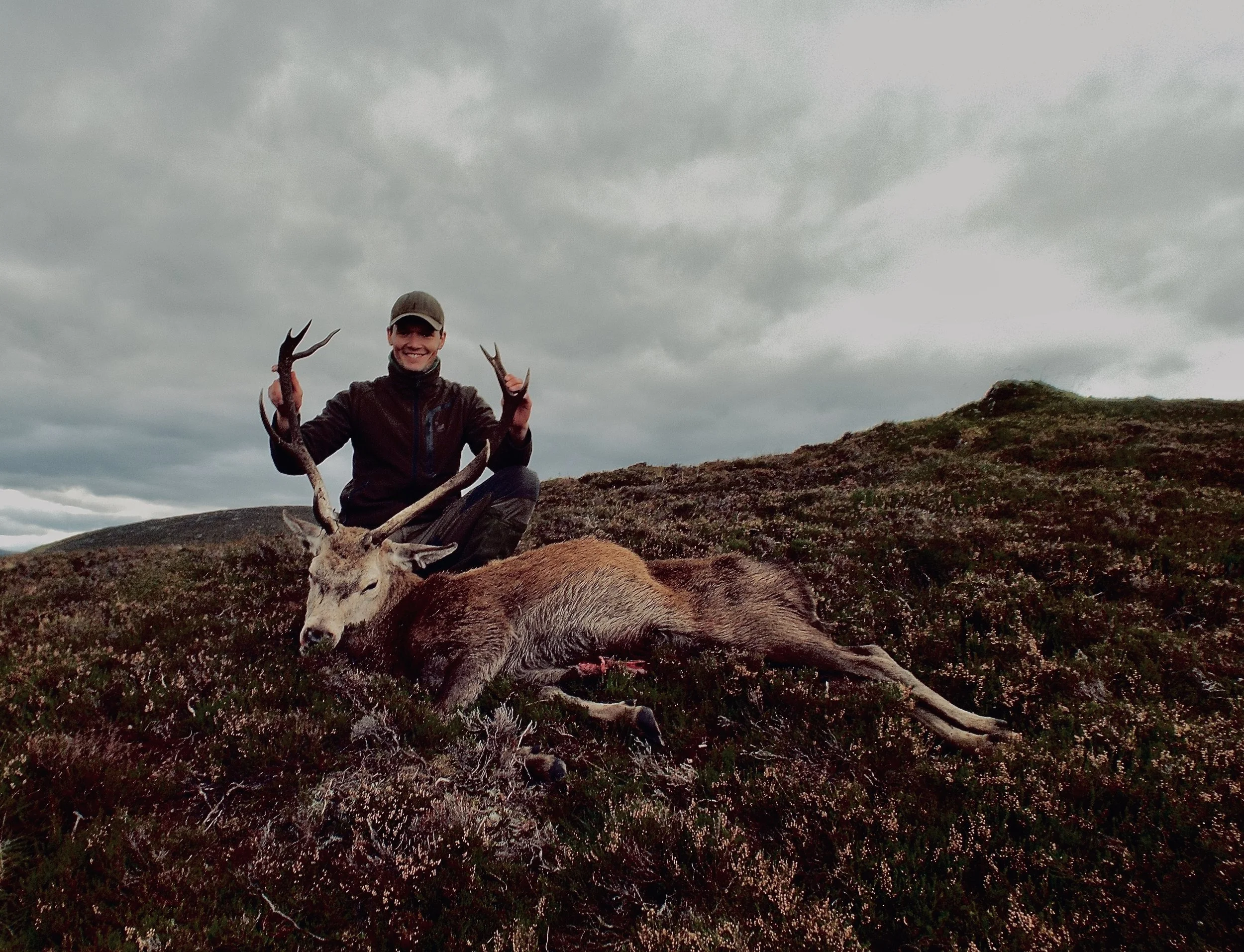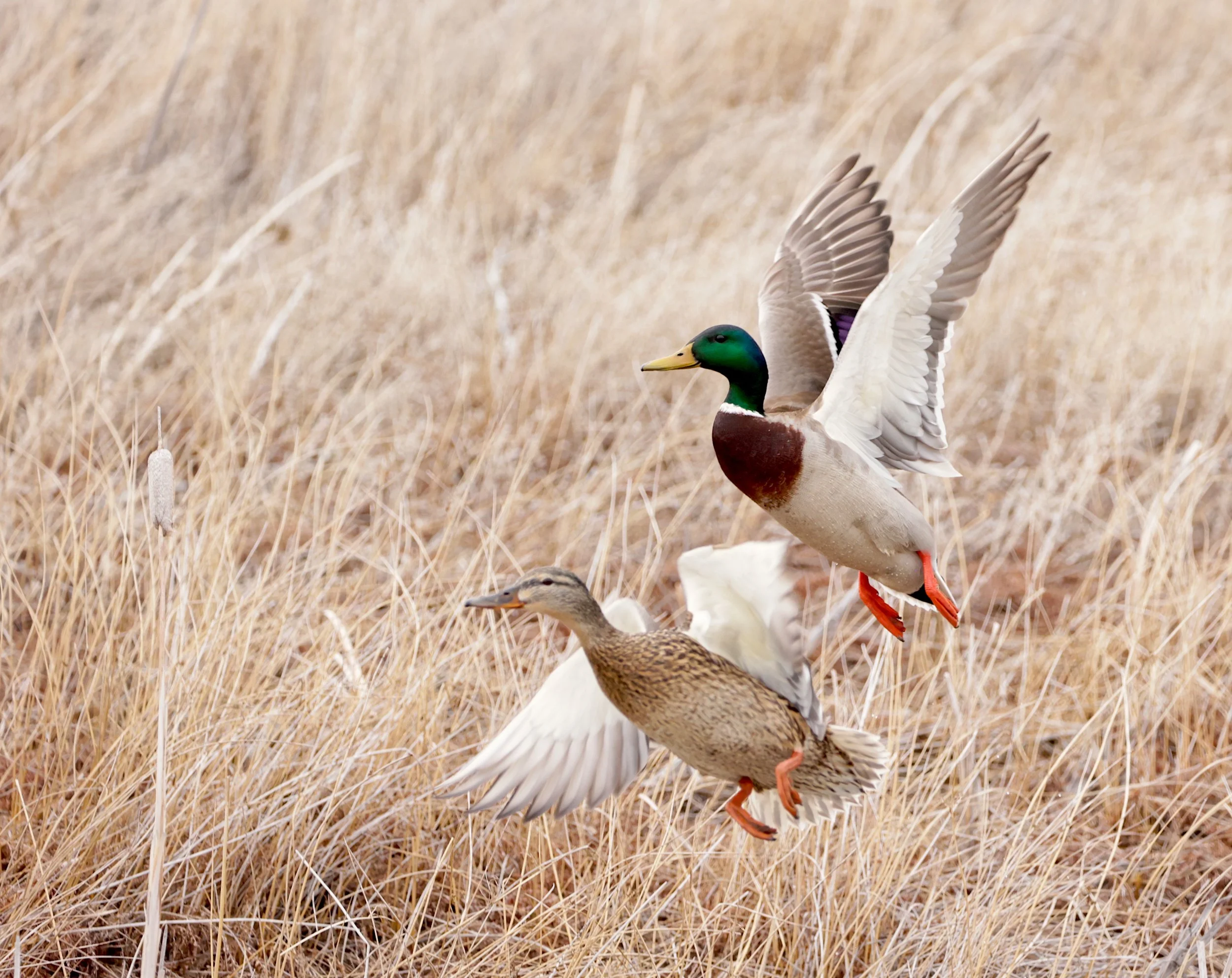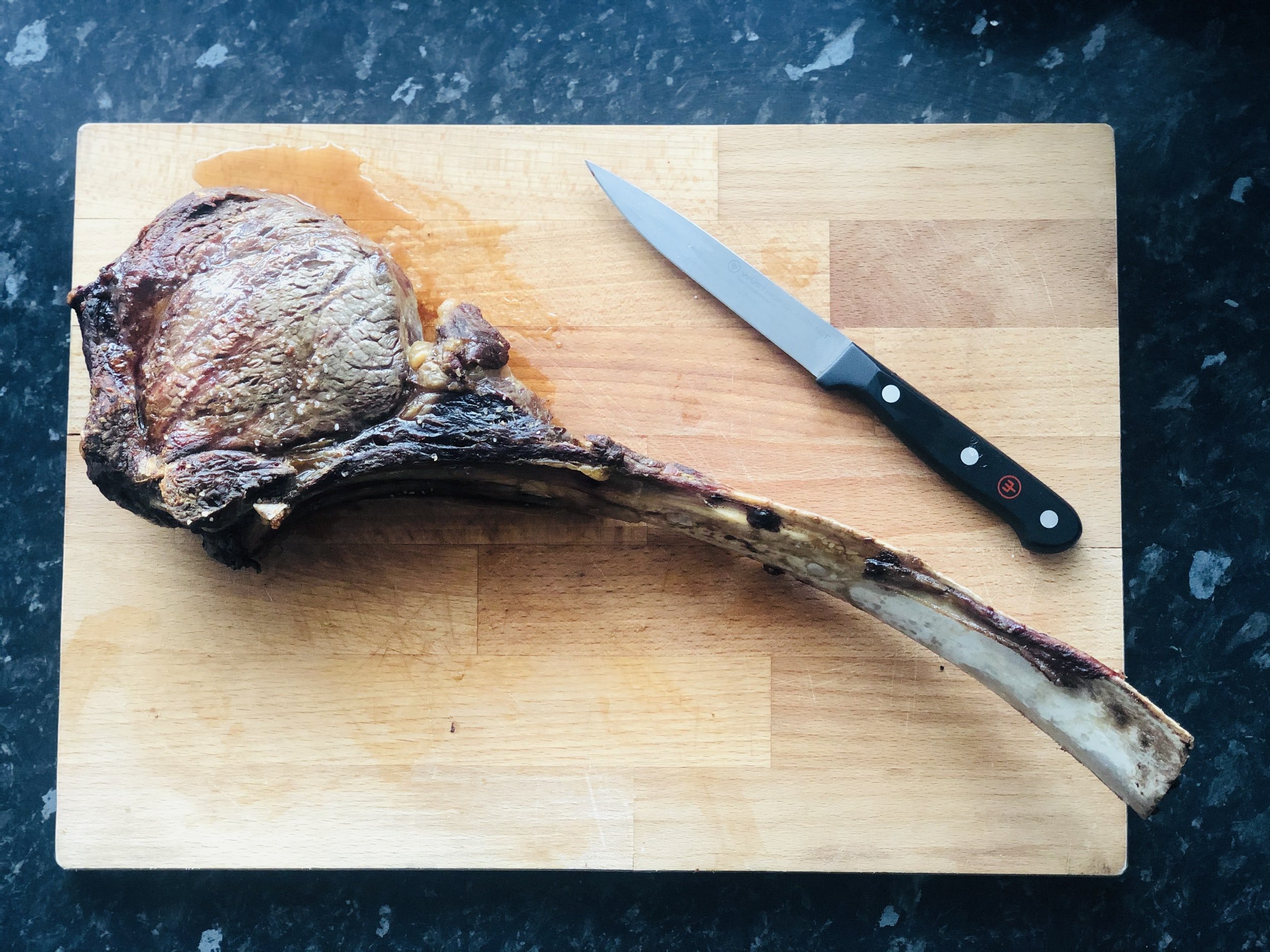Drilling Guns - As Versatile As It Gets
I honestly enjoy shooting bolt-action rifles. Especially in my favorite all-around cartridge, the .30-06. Such guns offer tremendous value in terms of versatility and utility. Most are great, straight-shooting rifles that get the job done on any prey of reasonable size. Some of my best hunting memories are connected to bolt guns. My biggest roebuck fell to a .243 Winchester. No wild boar ever got away after I pulled the trigger on my .30-06 chambered gun. But if I could only have one gun for the rest of my days as a hunter, what gun would that be?
The muzzle of a drilling combination gun.
If I were in the unfortunate situation to make that decision, I’d grab a gun I don’t even own. Old drilling that my grandfather passed on to my father when he hung up his hunting boots would be my choice. It has no fancy engravings, no special wood. It’s nothing more than a do-it-all gun for most situations you can find yourself in. A workhorse, so to say. It’s build-in standard drilling configuration, which means it has two side-by-side shotgun barrels and a rifle barrel beneath them. The shotgun barrels are fed with 16 Gauge shells. The rifle barrel is chambered in the truly old-fashioned 8x57 IR. I used that gun often when I was young. My fathers hunting ground offered small and big game opportunities. If a mix of predators, deer, and wild boar may occur at any time, nothing beats a combination gun. And so, I learned to appreciate the drilling.
Today, combination guns are rare in places other than Central Europe. And even in their home range, sellings are in decline. People simply opt for bolt action rifles and over-and-under shotguns instead, often considered too heavy, too expensive, or not accurate enough.
But that is a mistake, in my opinion. And none of the arguments against drillings is truly valid. Granted, drillings weigh about 7,5-8 pounds, 8-9 pounds mounted with a scope. That’s not super lightweight. But a full-grown man, capable of carrying a pack of 40, 50 pounds or more, should be able to tote a drilling gun on a day hunt. It is far from ideal for mountain hunts and wilderness hunts. A featherweight gun is an obvious choice for that. But most hunts in the western hemisphere are day hunts, stand hunts, or driven hunts. A bear hunt with hounds, running for miles through thick brush, isn’t where drillings excel. Although one could argue that standard drilling calibers in the 7-9.3mm (.284-.366 caliber) range, combined with two shotgun slugs, could be considered good bear medicine. And there’s a true advantage in heavy guns: they recoil a lot less in any given caliber than light models. That makes hitting your target a lot easier. Even recoil-sensitive hunters can shoot potent big game cartridges out of drilling guns without developing an ugly flinch.
Brand new drillings can indeed cost several thousands of dollars, depending on manufacturer, the wood of the stock, caliber, engravings. Premium manufacturers demand big cash for their high-end products. But a quick search on the internet will spit out second-hand drillings in the range of hundreds to two thousand bucks, often already scoped. At least in Europe. Considering that they represent two guns, this is no investment reserved for the wealthy.
The rimless version of the 8.5x63 mmR.
Accuracy can be an issue if you like long-range hunting or short series of shots. But this is not what this type of gun is built for. Combination guns are made for dense woods, where growth and terrain do not allow long shots. Areas where big and small game can be hunted on the same day. The one-man, one rifle concept gets a whole new dimension with drillings. They’re plenty accurate for 150- 250 yards. Fast follow-up shots will have the bullets “climb” on the target. Physics is cause for that: the rifle barrel heats up after a shot, and the metal expands. The two shotgun barrels won’t if fired. So the bundle of barrels will eventually bend up. Two or three shots are fine within a reasonable range. And the need for more firepower is rare. It should be cured with time at the range rather than more shots in many cases.
Drillings are typical break-action firearms. Commonly used constructions are the greener-, the double-greener- or the Purdey- system. Separating the bundle of barrels from the system and stock is possible and makes combination guns a pleasure to store away. And to clean appropriately. A selector enables the shooter to choose which barrel is fired upon pulling the trigger. Moving the small latch on the rear end will unlock the breach, which can then be broken until the breach is fully exposed. The opening also simultaneously cocks the firing pins. Upon pulling the trigger, they will protrude through the back wall of the breach and hit the primer of the cartridge/shell in the chamber. When opening the gun again, the extractor catches the rim of the spent shell and pushes it out of the chamber. So nothing new here, as combination guns function like any side by side or over and under shotgun. When practiced, reloading break-action guns doesn’t take anywhere near as long as it might seem. Think of African PHs reloading their doubles with lightning speed.
Drilling would be a nice asset on most stand hunts. If you’re not going to pull the trigger unless you see the huge racked deer or the 7 foot bear you dream of, any pure rifle will do the trick. But if a suddenly appearing coyote might intrigue you to do some predator control, drilling is just right for you. Another great opportunity could be a still hunt. Carrying a drilling while slowly sneaking through timber won’t exhaust you. And if you can’t turn up a deer or elk, the partridge you encounter on your way back might be enough to compensate for your efforts.
I fell in love with a particular gun — a Model 95k drilling built by German gunmakers before WWII in 1934. It has been used to take a variety of game by several members of my family, as my brothers and I started hunting with our father’s weapons. And though not perfect for the high country, even red deer in the mountains of Scotland fell to it, too.
The rimmed 8.5x63 mmR.
The rifle cartridge is the 8x57 IR (Infanterie Rand, which means infantry rimmed), the rimmed version of the 8x57 I (also known as the Patrone M/88). That cartridge was introduced in 1888 as a military cartridge. The Patrone M/88 was modified in 1905, with the new version being labeled the 8x57 IS, also known as the 8mm Mauser. The „S“ stands for „Stark“ (strong) or „Spitz“ (Spitzer-bullet), depending on who you ask. This cartridge has a rimmed sibling named the 8x57 IRS (infantry rimmed strong, if you will). All these variants are or were in use simultaneously.
The early versions are considerably weaker than the S-variants. They have a slightly smaller bullet diameter (.318 inches in the pre-1905 cartridge) in the rimmed and the rimless cartridge compared to the modern 8mm Mauser (.323 inches, the S-bore diameter).
It is imperative to distinguish the different versions. Don’t try to shoot a .323 bullet through a .318 barrel. That could lead to severe injuries.
Although far from a high-performance cartridge, even the old rimmed version offers enough punch to put down every European game animal except for bear and moose (although it should perform well on short distances). The trajectory is rather arching. But sighted in with 1 ½ inch high on 100 yards, shots at 150-200 yards are fine without thinking about bullet drop, even on small game. A three-inch raise above the line of sight for bigger game will further the maximum point-blank range. Factory loads offer energy levels in the same ballpark as the .243 Winchester and the .30-30 Winchester, maybe slightly above that. Those are viable deer hunting cartridges themselves, so there’s no reason the 8x57IR isn’t.
Factory ammunition options are sparse, and one can only find a handful of bullets for hand loaders. The most common bullet is a 195 grains cup and core round nose bullet.
Modern drillings are often configured with the S-variant of the cartridge, which offers performance on par with a .30-06. Other typical chamberings include the 7x65R, 7x57R, and 9.3x74R cartridges. They can even be built for rimless cartridges as well. But historically, break-action guns worked more reliably with rimmed rounds.
The shotgun barrels of the 95k are fed with shells in 16/70 (or 16 Gauge), another not-so-common caliber. The use of it is in decline, too. But you can still buy these shells in most gun shops. Slugs are available, so there is the right food for every barrel in every situation. 12 or 20 gauge are equally good options. Insert barrels for one of the shotgun barrels, usually for a smaller rimmed cartridge, add versatility for hunting predators. If versatility is what you desire, guns like this might complement your more specialized setups. Anything might fall to the hunter from partridge to moose with a drilling in his hands.
What I find to be a fantastic feature of combination guns are external hammers. Pulling the hammer right before the shot is not only extremely safe, it’s also wonderfully old-fashioned. Those old models are often chambered for the 9.3x72R. You’ll often find guns on the used gun market for reasonable prices.
You won’t win the next LR competition if you are equipped with a drilling or any combination gun, for the matter. But if you are anything like me and enjoy older and special guns, a drilling might be right for you. And if you ever have the chance to lay your hands on a drilling, shoot, or buy one, I’d say go ahead. I bet you won’t regret it. They are versatile, beautiful, a bit extravagant, and, most importantly, very effective tools in today’s hunting landscape.


